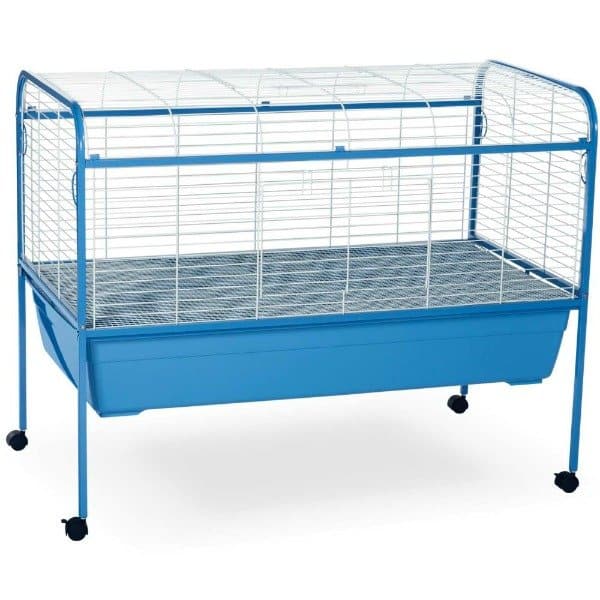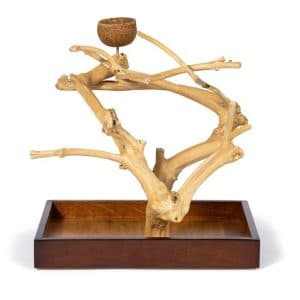
The Challenge Of Rescuing An Older Injured Citron Cockatoo
Last Updated on by Mitch Rezman
Thank you Constance R.
So often its important to hear from independent third parties who provide valuable feedback on our pet bird content.
Having been in the process of rescuing budgies, (current budgie census is at six) and spending a lot of time with Peaches, our Senegal parrot weighing in at about 115 g, our recent focus has been skewed towards smaller birds.
Constance has a Congo African Grey and an Umbrella Cockatoo and from her recommendations, this is going to be a cockatoo-lishish post.
For this we need to offer a round of applause for Constance .
With that as a backdrop let’s dive in to some concentrated cockatoo content
From FB messenger
Hi Mitch, I have a question?
We got Andy our U2 about 4 years ago.
He is around 28 and we got him from a rescue.
I’ve read a lot about Umbrellas and they are frequently called “velcro birds”.
Andy does not fit that description.
We have him out of the cage 4 plus hours a day.
I still work so he is out more on my day off. We also have 4 Conures.
Two he gets along with and the other two not, so out times are rotated so everyone gets their play time. So my question is….
Andy often will put himself back in his cage.
If I have him out with us in another room he will hop down off the perch and waddle back to his cage. He doesn’t scream except in the morning when he wants to know where I am.
I am hoping this means he’s content? He has plenty of toys, he eats well and is a good weight averaging 550 grams.
He gets plenty of sleep usually 12 to 13 hours a night. He sees our Vet regularly.
I want to do right by him as he came to the rescue from a breeder and they told us he had a pretty rough life.
So is there anything more I should be doing?
I read Sunday Morning Birdy Brunch every week but I’ve never seen anything like this discussed.
He actually seems to look at cage as his “man cave” so to speak. Thank you so much! Kim S
Hi Kim,
We’ve spoken on the phone and exchanged communications.
My response is that you serve as an exemplary example to other cage bird keepers.
I encourage everyone to follow your lead in the care of their birds.
Kim has an open invitation to post on our blog with any content she can provide to help us all improve our bird caregiving techniques.
The challenge of rescuing an older injured Citron Cockatoo
I enjoy receiving your Email.
After taking the challenge of rescuing an older injured Citron Cockatoo we had another injury in which the leg was broken and locked to the 4 O’clock position.
The Vet advised us to settle for healing at that position.
She hobbled before the 2nd injury, and can now climb and perch.
What we learned from this is that there no place to go to for materials or cages to house an injured bird.
Our desired cage would be more horizontal than tall, have horizontal bars and have large doors and/or a top opening to facilitate moving a toweled bird.
I found a useable cage and mounted its only perch so her tail would not drag on the floor bottom. Her feed and water cups are low enough so she can stand on the floor to use them.
I would like to give her more floor space.
But no one seems to make even the cage I found anymore.
Because of your quick shipping service, I thought of you as possibly an emergency cage distributor with appropriate Webpage.
Most people do not know where to start with platforms, heaters, easy grip perches and so forth.
Even Vet wrap, neck collars, padding, are beyond easy to find.
And shipping time does not address emergency needs.
So I believe there is a market for this.
I had to use a cat carrier box and sleep on the floor next to my bird when she was in a neck collar and and then put her in a clear 18 gallon tote to keep her from climbing until I could find a low cage.
There has to be a solution that is better than what we went through.
Thanks for your looking at this.
Roberta
Hi there Roberta
We get more inquiries about handicapped and arthritic parrots than you might think.
Many people have had luck with rabbit cages.
Handicapped Assist Cage for Parrots
Birds or Small Animals by Prevue
They are low and long to keep the bird.
The shallowness of rabbit and small animal cages precludes the bird from getting too high reducing the chances of further injury
Recently adopted a Goffins Cockatoo
Linda F replied
Hi
Recently adopted a Goffins cockatoo and I am having much difficulty finding info on their wild, natural behavior.
How does their diet specifically differ from CAG ?
Do they have special needs?
Are there toys designed to challenge this active in-quizative bird?
My Stewie seems to want more from me than friendship.
Do you have advice on discouraging springtime activity?
He offers me the underside of the wing, tries to maneuver my fingers from his head to his back, and more.
Also throws food at my mouth when close enough.
Sure would like to learn more about this delightful cockatoo’s natural behavior, diet and habits.
L
Hi Linda
It’s important to know the age and sex of the bird.
Goffins have a similar diet to CAGS (Congo African Greys).
A good commercial bird food like Hagen Tropimix large parrot is a fine food containing nuts, fruits, hull-less seeds and Tropican Pellets.
Learning what your bird likes in terms of fresh food may take some experimentation which usually pays off.
It took us about a month for us to learn that Peaches our Senegal likes a mixture of green beans, carrots and peas served warm for breakfast.
Our 9 budgies and Peaches enjoy lettuce, preferably romaine but we’ve upped the veggie game with fresh cucumber slices.
I hang romaine lettuce in the budgie’s cage and many times I will cover Peaches main food bowl with a large leaf of romaine lettuce.
Build a renewable budgie privacy hut for enrichment after restocking the cage ~ Video
As for bird toys, it’s not so much a specific toy but having enough toys to challenge your cockatoo’s brain, beak, and feet.
Toys go hand-in-hand with food.
The activity of foraging is associated with searching for food in the wild.
Birds will seek seeds in the grass. Berries, bugs and nuts in the trees and whatever they can find in the bark.
https://www.youtube.com/watch?v=MSwNdMES-OU
Some birds will actually scratch the ground and look under rocks for other food sources.
Your new bird is exhibiting brooding behavior and has clearly bonded with you quite quickly.
The wing opening activities is a pure suggestion to have sex and should be ignored.
Who doesn’t like our entire body stroked, but in the case of birds you should always pet your goffin cockatoo from the neck up only.
https://www.youtube.com/watch?v=I8GMR-AauRc
Ensure that there are no places that promote brooding activities like tents in the cages, blankets on and under furniture or boxes of any sort, piles of shredded paper.
Generally anything that could serve as a possible dark place for a bird to go in and think about having babies.
Taking control of your bird’s light cycle is essential here.
We want to get a full-spectrum light on top of the cage.
Arrange it so the bird can’t access the lightbulb but close to the top of the cage.
It’s very important that the light be put on a timer providing 12 hours of light and 12 hours of darkness.
The bird should be in the cage when the light comes on the morning and in the cage when the light goes off the evening signaling to the bird via its pineal gland that each day’s light cycle is close to what your birds instinctual expectations would be in the wild living close to the equator.
It’s best not to put your face close to a bird’s beak, especially a new bird.
Anything can happen but in the meantime, she’s regurgitating food to you because she loves you.
Another practice not to be encouraged.
Hope that helps
Best
mitchr
Hey Constance – it’s a start 🙂
Author Profile
Latest entries
 The Traveling BirdJune 26, 2025Can You Name 5 Parrot Species That Are Living Wild in the USA?
The Traveling BirdJune 26, 2025Can You Name 5 Parrot Species That Are Living Wild in the USA? Bird BehaviorJune 26, 2025How is it Parrots Are Problem Solvers Social Animals and Even Use Tools?
Bird BehaviorJune 26, 2025How is it Parrots Are Problem Solvers Social Animals and Even Use Tools? Bird & Parrot AnatomyJune 25, 2025How a Tiny Chemical Modification Makes Parrots Nature’s Living Paintings
Bird & Parrot AnatomyJune 25, 2025How a Tiny Chemical Modification Makes Parrots Nature’s Living Paintings PigeonsJune 20, 2025How Do Parrots Thrive in Cities Outside Their Native Habitats?
PigeonsJune 20, 2025How Do Parrots Thrive in Cities Outside Their Native Habitats?



